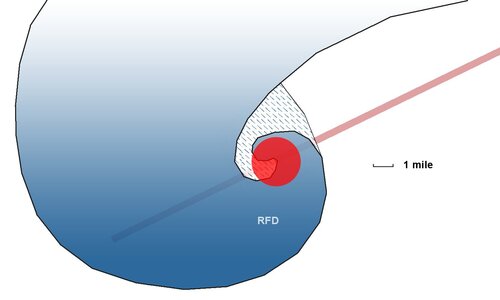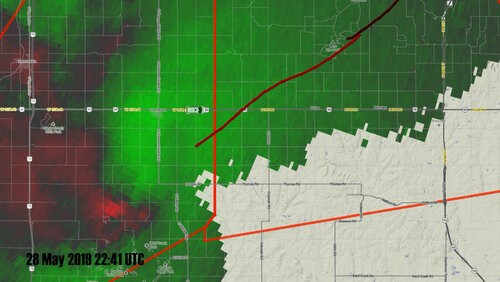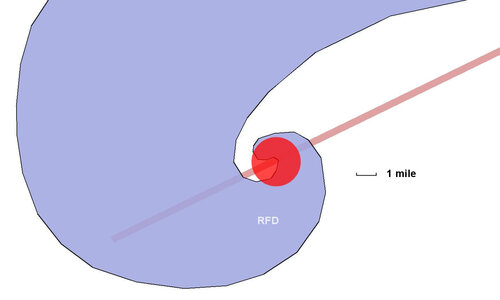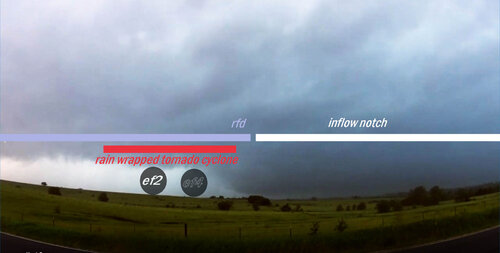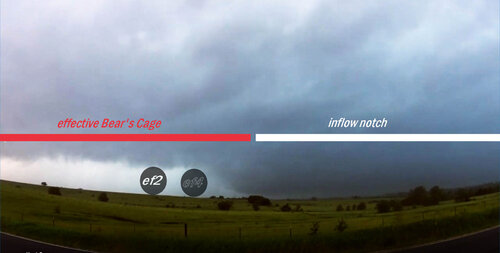Dan Robinson
EF5
Skip, I would caution on assuming that everyone's interpretation of storm structure and evolution is so uniformly "obvious", even among veterans. I would also advise against what seemed to me to be a very scolding tone and an accusation that some (including Davies and me presumably) have ulterior motives is discussing counter-points. If you have reason to believe so, then please state them so we can talk about it.
As I pointed out before, we all ultimately have to learn these things on our own in the field independently. I have read and viewed most of the presentations you cited, and my understanding of the "bears cage" as it is loosely defined (as does presumably a large part of the chase community) was not the RFD itself, but the immediate region where the inflow and RFD are interfacing ("curling" around each other). The RFD can extend for many miles south, west and east of this location. The assertion that the entire RFD is now a 100% no-go region is equally baffling to me, as you put it, and seems a rather rash overreaction to El Reno. Is every supercell El Reno now? At least that is my takeaway here, if I'm misunderstanding you, then please accept my apologies.
Secondly, the couplet was evident on Level 2 imagery, which is what is being used in your and other examples posted in this thread. On Level 3 imagery - such as what is pulled in GRLevel3 by chasers in the field - the couplet was not as apparent. That is an important distinction.
I feel like this discussion is devolving into a blame game, with some who have put themselves on a higher plane of storm knowledge insulting the intelligence of us more inferior types for "not knowing better" or worse, instead of an honest inquiry into what happened and learning from it.
As I pointed out before, we all ultimately have to learn these things on our own in the field independently. I have read and viewed most of the presentations you cited, and my understanding of the "bears cage" as it is loosely defined (as does presumably a large part of the chase community) was not the RFD itself, but the immediate region where the inflow and RFD are interfacing ("curling" around each other). The RFD can extend for many miles south, west and east of this location. The assertion that the entire RFD is now a 100% no-go region is equally baffling to me, as you put it, and seems a rather rash overreaction to El Reno. Is every supercell El Reno now? At least that is my takeaway here, if I'm misunderstanding you, then please accept my apologies.
Secondly, the couplet was evident on Level 2 imagery, which is what is being used in your and other examples posted in this thread. On Level 3 imagery - such as what is pulled in GRLevel3 by chasers in the field - the couplet was not as apparent. That is an important distinction.
I feel like this discussion is devolving into a blame game, with some who have put themselves on a higher plane of storm knowledge insulting the intelligence of us more inferior types for "not knowing better" or worse, instead of an honest inquiry into what happened and learning from it.
Last edited:

